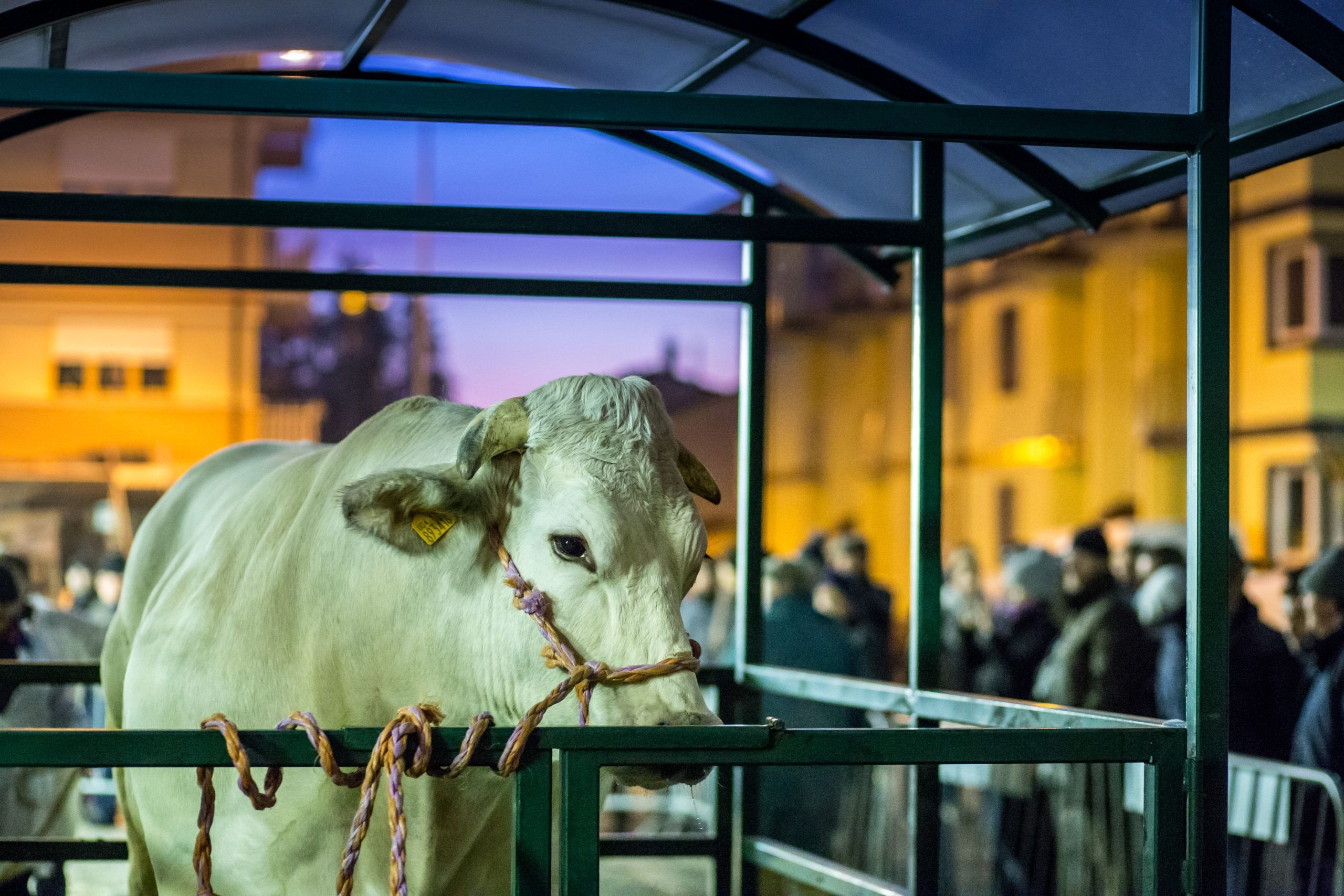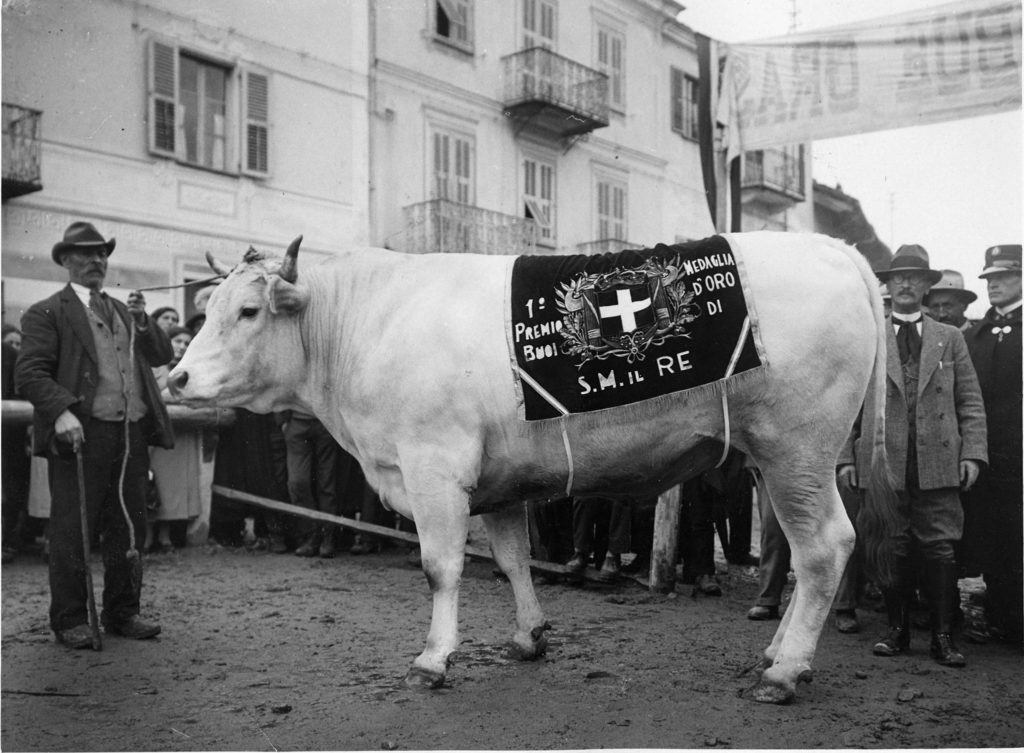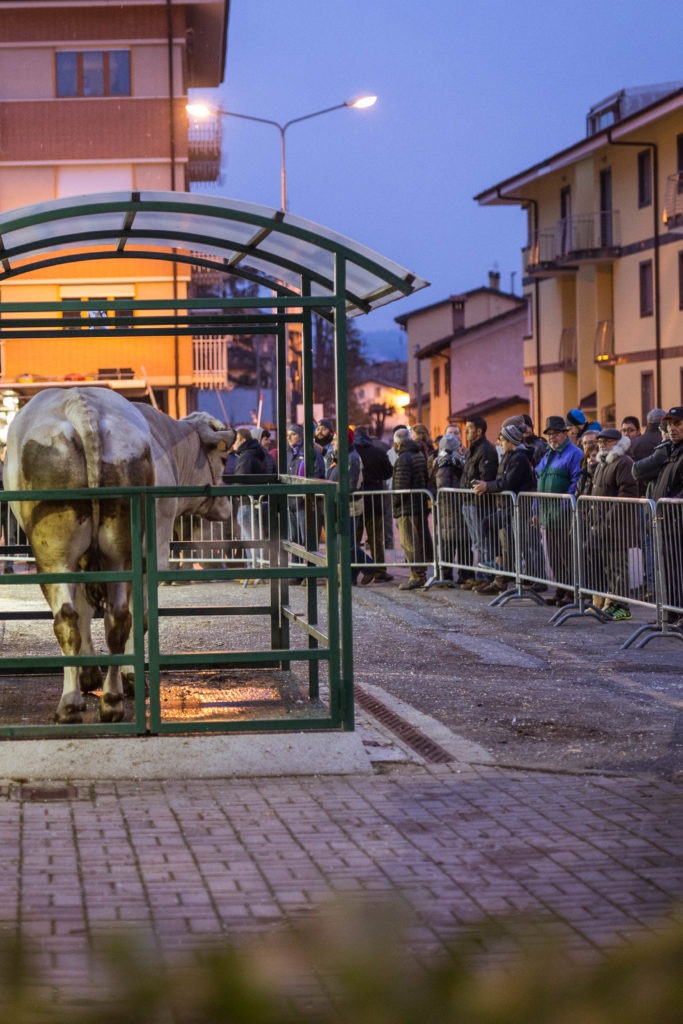THE FAIR OF THE FAT OX

From the middle ages to the present day, a showcase for the excellence of Piedmontese cattle breeding
It’s 6 in the morning. The sun has not yet risen over the hills on the horizon and already in Carrù there is a queue outside the restaurant door. It is the second Thursday before Christmas, and just as it has been for the last five centuries, the town breaks with convention to immerse itself in tradition. On the day of the Fat Ox Fair, just for starters, breakfast is boiled beef, tripe and mulled wine and you start drinking and partying from early in the morning. Then, during the day events are held including the grand parade of oxen, culminating in the assignment of the coveted “Gualdrappa” (a high-quality drape awarded to the winner of each category.)

FAIR OF THE FAT OX, A RITUAL FROM… THE MIDDLE AGES
We are all ready for the most festive and tastiest fair in Piedmont/ from early morning until sunset, once a year, here in Carrù, the whole world gathers.
(Tre Lilu – A la fera del Bò)
It is a central event for the breeders of the zone, perhaps the most prestigious event dedicated to the fat ox and piedmonts’ breed of cattle. This ritual has been held since the middle ages and has been institutionalized in its present form since 1910. In 1635 Duke Vittorio Amedeo I granted the community of Carrù the right to hold a three-day-long annual fair, to fall after 4 November, the feast of San Carlo. On 15 December 1910, the first official edition of the present fair took place, with the aim of offsetting the scarcity of animals for slaughter and regulating the price of meat which was rather high at the time. The monregalese agricultural committee and the municipality of Carrù wanted to promote the consumption of meat among the less well-off classes and demonstrate “how much can be obtained for quantity and quality of meat from the piedmontese breed of cattle when subjected to rational fattening”.
Since then, once a year everything stops in Carrù. There have been changes in recent years (the day was moved from Thursday to Sunday, then to the feast of the Immaculate Conception (8 December), before returning to its “origins”. Tradition is immutable, and tradition wants to celebrate the fair in mid-December. Wine starts flowing from early the morning and there is the contention among the farmers at the forum boarium, the agora of the cattle.

Over the years, the event has grown in prestige, both from a touristic and gastronomic point of view, with a significant increase in gourmet enthusiasts, who, when coming upon the Langhe and its gastronomic excellences, swarm to the Fair: nowadays it is not just the traditional agricultural workers and farmers who are tied to traditions, but a modern audience of foodies, tourists, cooks, journalists, food bloggers and influencers. Every year some celebrities drop in: among the major aficionados there is definitely the Milanese comedian Renato Pozzetto, who never disdains a little trip to the Langhe.
But the “Fair” is not just a single day, it is a way of life. Feasting begins at least at least a month before with lunches and dinners of the “Gran Galà”, based on boiled beef obviously. Then there are events, conferences, and trade fair stands. The Pro Loco teams join forces under the marquee in the square and for the duration of the event cater for over 400 place settings at lunch and dinner, to all the enthusiasts who want to come and enjoy the boiled beef of Carrù. Not to mention, of course, the local restaurants, flooded with reservations.
FAIR OF THE FAT OX, THE STICK OF THE TOCAU
Tradition dictates that the cattle walk to the fair from their stables, led by the “Tucai” who are specialized figures (sometimes the farmers themselves, sometimes not) expert in herding the livestock using the traditional stick, an instrument with which the pace and direction of the cattle can be regulated. This tool, made of chestnut wood, curved by hand with the help of fire and water, is somewhat the symbol of the event. Every year, the artisans of Carrù produce 100 copies of these sticks, all with an engraved tag that records the edition of the Fair. They therefore become a memorial and an exclusive testimony of the event, a precious collector’s item.
FAIR OF THE FAT OX, THE TRADITION OF THE BOILED MEAT
Sunday, in the peasant tradition, is the day of the “lesso” (boiled meat). A day dedicated to the Lord and the family, the “potagé”, the typical stove-hob of the Piedmontese houses of yesteryear, with meat and soups simmering from early morning. The meat absorbs unique flavours and aromas during the slow simmer and is then warmed up for serving. The local ritual surrounding the tradition of the boiled beef demands seven cuts (plate, brisket, chuck, muscle, shin, shoulder, rib)and many are the “ornaments”, or other delicacies that must accompany the dish (calf head, tongue, tail, hen, boiled sausage, meat roll or loin). Finally, in order not to miss out on anything, you cannot overlook the sauces, from the traditional “Bagnet verd” with parsley, anchovies, vinegar, garlic and breadcrumbs, to the “Bagnet Rus”, with tomatoes, bell pepper, garlic, mustard and red vinegar. Then the Cren sauce with horseradish, honey-based sauce, powdered mustard, grape mostarda and more. Even if, like every local knows, the true enthusiast and connoisseur is able to appreciate the full taste and finesse of such an excellent meat with only one seasoning: a few grains of coarse salt.







